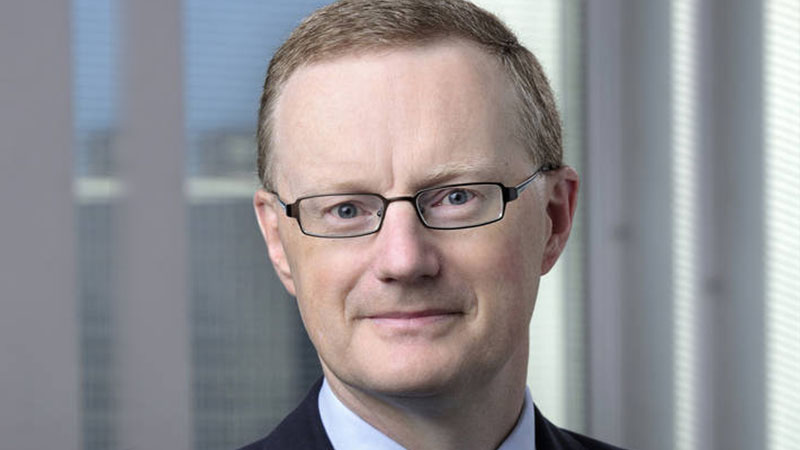Minutes from the Reserve Bank of Australia’s (RBA) last monetary policy meeting have revealed that the board had weighed up a cash rate rise of 25 bps, before it opted for 50 bps, the largest incline in 22 years.
“Members noted that both options would leave the cash rate below 1 per cent, which would still be highly stimulatory, and that further increases would be required,” the minutes said.
But the RBA had chosen the larger increase, following a larger-than-expected consumer price index (CPI) inflation outcome in the March quarter and evidence from its business surveys that wage rises were on the horizon, in the months ahead.
The RBA now expects inflation to peak at around 7 per cent in the December quarter, before it declines. In early May, the central bank had only expected inflation to top out at 6 per cent by the end of the year.
During an address to the American Chamber of Commerce in Australia on Tuesday (21 June), RBA governor Philip Lowe commented the board had reacted to the heightened inflation forecast.
“At the end, we decided on a 50 bp increase because of the upward revision to the inflation outlook and the recognition that interest rates were still very, very low, for an economy that was experiencing high inflation, headlights, such low unemployment,” Dr Lowe said.
The governor added that he expects a similar discussion to take place next month, as the minutes have confirmed that there are further steps to come over the months ahead.
“We’re not, as I said in my prepared remarks, we’re not on a preset path,” he said.
“We’re going to look at the data we have each month and the level of interest rates and the inflation. But I expect that next month we’ll be having the same discussion at our board meeting: 25 or 50.”
Economists from the big four banks expect the RBA to repeat the 50-bp hike either in July or August. NAB has tipped that it will duplicate the move in both months.
The June minutes showed the argument for a 25 bp-rise was that it would be appropriate to take a “steady approach to withdrawing monetary policy stimulus”, through a series of rate increases in line with the RBA’s typical movements.
The last time the board increased the cash rate by 50 bps was in February 2000.
Other central banks had also chosen to go with 50-bp increases, but the RBA noted these peers met less frequently.
However, the board had observed a shift in Australia’s “inflation mindset”, with firms being more willing to pass on increased costs to customers and employees demanding higher wages to compensate for soaring living costs.
“In such an environment, there is a heightened risk of persistently high inflation, especially if expectations of higher inflation become entrenched,” the minutes said.
“If that were to occur, the task of returning inflation to the target would become more difficult and come at a higher cost in terms of lower levels of economic activity and employment.
“Raising the cash rate by 50 basis points at the current meeting would help to mitigate this risk.”
House prices had also begun to slide across some markets, but all up, they remained more than 25 per cent higher than pre-COVID levels and supported household wealth and spending.
Further, the RBA expects households to be cushioned by the large cash buffers they built up during the pandemic, but it will be keeping a close eye on consumer spending.
As Dr Lowe noted, households have around $200 billion in extra savings in offset and deposit accounts. The median borrower has also created a buffer of one year’s worth of mortgage repayments, with some managing two years’ worth.
“Right at the start, the first increases in interest rates that we’ve done really haven’t affected most people’s mortgage payments that much because people have built up big buffers, many people were paying more than they needed to,” Dr Lowe explained.
“So at the moment, the higher interest rates have not had a really first order effect on most people’s mortgage repayments that clearly, I’ve heard [for] some people. Nut broadly, it hasn’t had a big cash flow effect.
“But as interest rates start to rise, those buffers will be eaten into and the fact that households have more debt than they used to, it will start to bite and we’re very conscious of that.”
Lowe welcomes RBA review
As Treasurer Jim Chalmers has signalled that he will move forward with an independent review into the Reserve Bank, Dr Lowe has said he is “not worried”.
Despite expressing some reservations about an inquiry previously, the governor called it an “opportunity”, to make sure that the RBA’s monetary policy settings are serving Australia.
“It’s an opportunity to learn and to hear people’s perspectives. And it’s an opportunity for us to respond on some public policy issues as well,” he said.
“So I’m not worried that it’s going to dig up anything. It’s an opportunity to learn and at the bank, we’ve got a very strong learning mindset.”
Dr Lowe promised the RBA “will work constructively with the government”.
The Labor Party had committed to an inquiry into the RBA before the election.
[Related: RBA’s faster rate rises to accelerate housing decline: ANZ]
 ;
;
